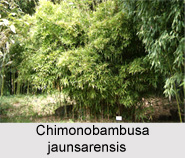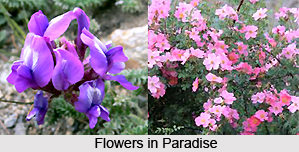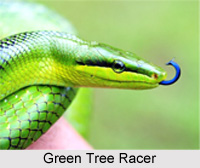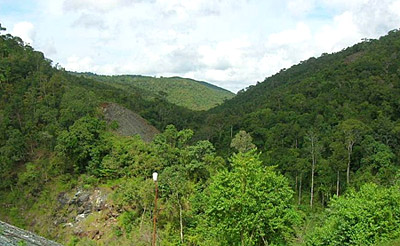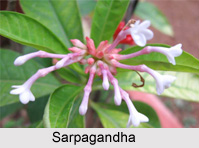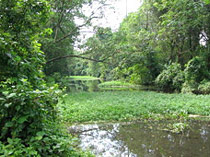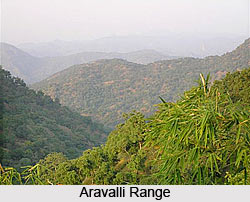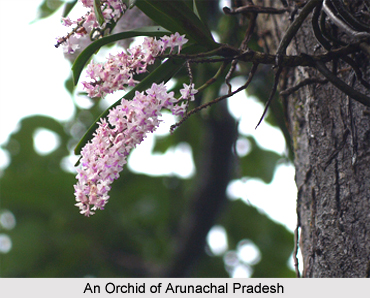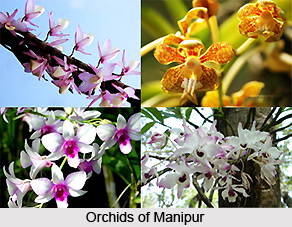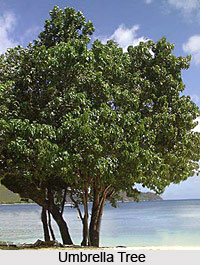 With a nice compact and clean-cut crown, the `Umbrella Tree` often gets the appearance of a child`s model tree that is typically carved and painted. The tree is known as `Thespesia Populnea` to all the scientists of the world. The word `Thespesia` is derived from the word `Thespesios` that means "divine" and the word `Populnea` means, "having leaves like a poplar". This tree belongs to the family of `Malvaceae`. It is known as `Bhendi`, `Gajahanda` and `Parsippu` in the language of Hindi. In Bengali language, the names of the tree are `Poresh`, `Paras Pipal` and `Gajashundi`. The Tamil people call it as `Portung`, `Puvarassu` or `Pursa` and in Telugu, it is `Gangareni`.
With a nice compact and clean-cut crown, the `Umbrella Tree` often gets the appearance of a child`s model tree that is typically carved and painted. The tree is known as `Thespesia Populnea` to all the scientists of the world. The word `Thespesia` is derived from the word `Thespesios` that means "divine" and the word `Populnea` means, "having leaves like a poplar". This tree belongs to the family of `Malvaceae`. It is known as `Bhendi`, `Gajahanda` and `Parsippu` in the language of Hindi. In Bengali language, the names of the tree are `Poresh`, `Paras Pipal` and `Gajashundi`. The Tamil people call it as `Portung`, `Puvarassu` or `Pursa` and in Telugu, it is `Gangareni`.
For the cleanliness and neatness the tree posse, it has been considered as one of the most suitable formal park plants. People use this tree as a shade tree as well, as it has close-growing foliage. The tree is unable to flourish well at a great distance from the sea. This is common in the tropical seashore of Asia. The flowers of the `Umbrella Tree` are large in size and cup-shaped. Though, they look like the tulips, their crinkled and fragile petals their temporary life bear no resemblance to that plant at all. The flowers appear throughout the year, sometimes alone and sometimes in pairs. They are very bright and lemon yellow in colour. They bear some patches of blood-red colour at the base of each of the five petals.
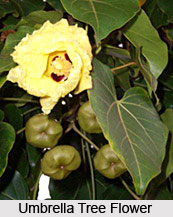 The whole flower of the Umbrella Tree gives such an impression that it has been compressed and twisted in the bud and as a result it was impossible for the petals to smooth themselves out again. Several white stamens sprout from the pistil and rise like a wick in the centre. They are prominent because of their deep-yellow anthers. Although they are evergreen, many of them fall down in the month of February. The arrogant leaves obtain the same lemon-yellow tint as the flowers and at the very first glance one gets the impression that the tree is in its full bloom. The shape of the leaves is like human hearts and they are pointed. The noticeable pale nerves radiate from the base. They are usually 5 to 12.5 cm in length and very broad. They bear brown and green stalks that are about couple of inches in length.
The whole flower of the Umbrella Tree gives such an impression that it has been compressed and twisted in the bud and as a result it was impossible for the petals to smooth themselves out again. Several white stamens sprout from the pistil and rise like a wick in the centre. They are prominent because of their deep-yellow anthers. Although they are evergreen, many of them fall down in the month of February. The arrogant leaves obtain the same lemon-yellow tint as the flowers and at the very first glance one gets the impression that the tree is in its full bloom. The shape of the leaves is like human hearts and they are pointed. The noticeable pale nerves radiate from the base. They are usually 5 to 12.5 cm in length and very broad. They bear brown and green stalks that are about couple of inches in length.
The fruits of the `Umbrella Tree` sit loosely in the engorged calyx when they are young, but later, they swell up and take the size of a small green apple that ultimately turns black. The tree is tremendously useful. A tough fibre obtained from the inner bark can be made into cordage. The bark and the timber of the tree contain tannin and yield a red dye. The wood is able to retain its qualities in water and hence it is ideal for boats, vehicles and house building. People can obtain a yellow dye from the flowers and fruit and the fruit juice is a cure for scabies and other coetaneous diseases. Application of the compressed capsules to the forehead can cure migraines and a tonic can be concocted from the roots as well.
